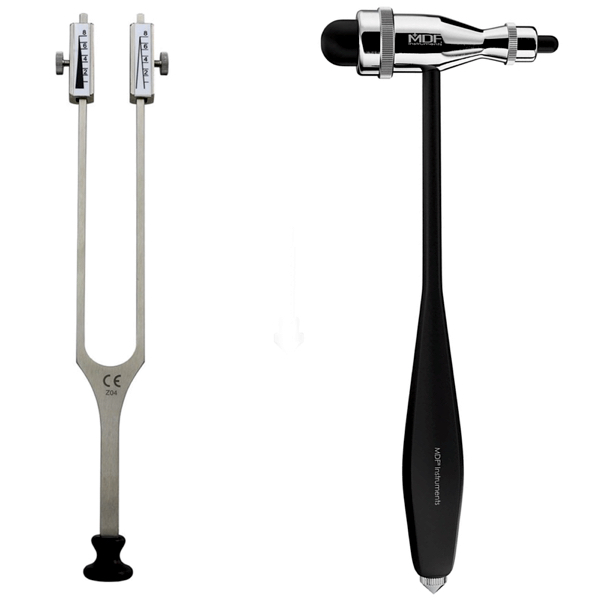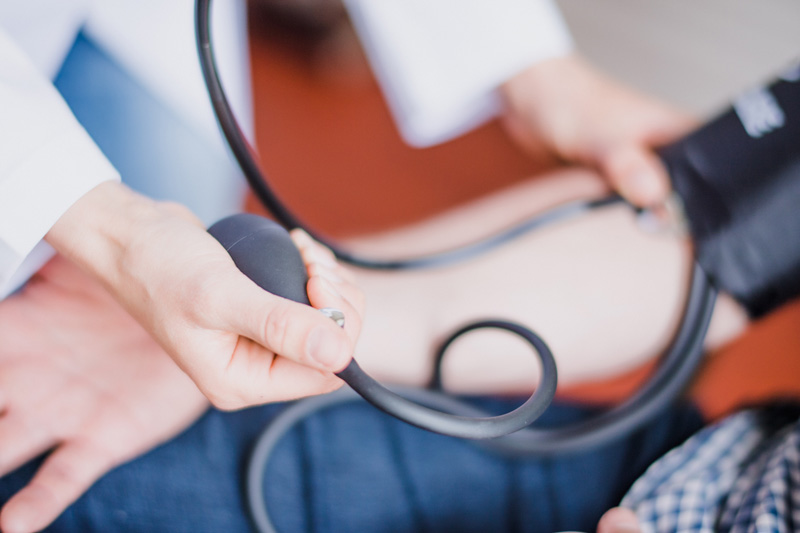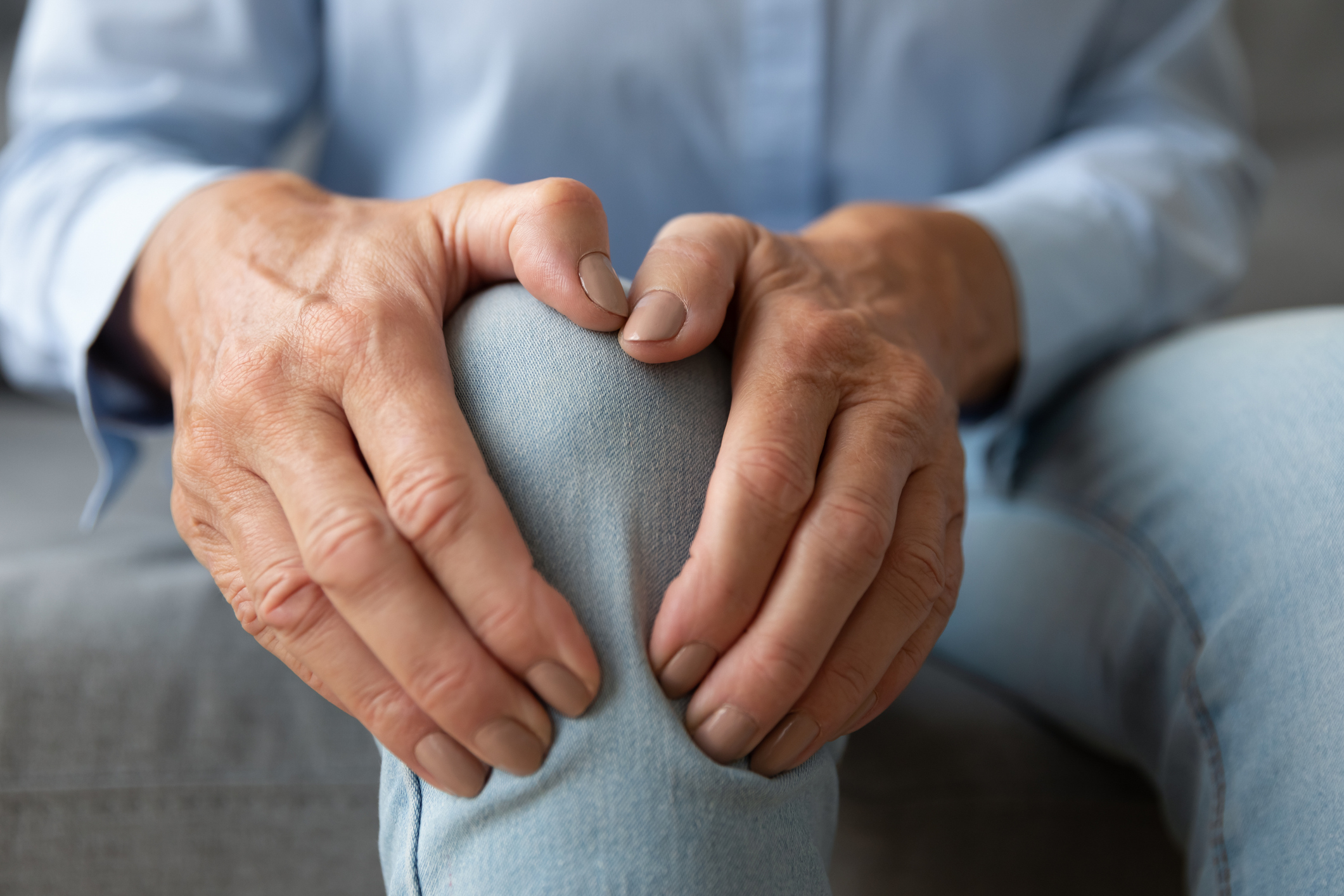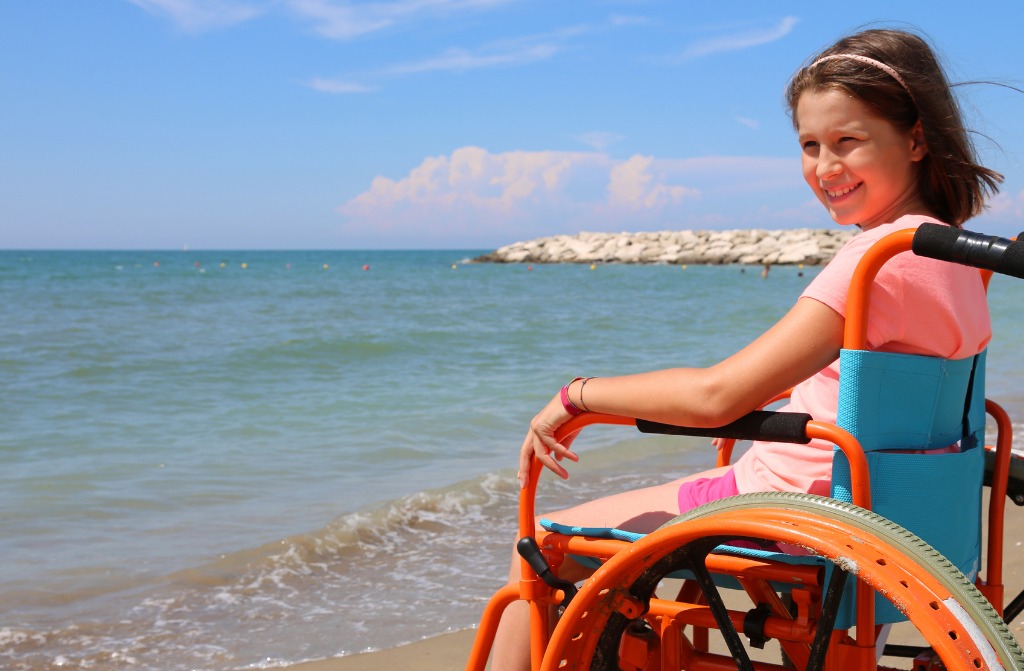Guillain-Barré Syndrome
Guillain-Barré syndrome (GBS) is a rare neurological disorder in which the body’s immune system mistakenly attacks part of its peripheral nervous system—the network of nerves located outside of the brain and spinal cord. GBS can range from a very mild case with brief weakness to nearly devastating paralysis, leaving the person unable to breathe independently. Fortunately, most people eventually recover from even the most severe cases of GBS. After recovery, some people will continue to have some degree of weakness.
Guillain-Barré syndrome can affect anyone. It can strike at any age (although it is more frequent in adults and older people) and both sexes are equally prone to the disorder. GBS is estimated to affect about one person in 100,000 each year.
What causes Guillain-Barré syndrome?
The exact cause of GBS is not known. Researchers don’t know why it strikes some people and not others. It is not contagious or inherited.
What they do know is that the affected person’s immune system begins to attack the body itself. It is thought that, at least in some cases, this immune attack is initiated to fight an infection and that some chemicals on infecting bacteria and viruses resemble those on nerve cells, which, in turn, also become targets of attack. Since the body’s own immune system does the damage, GBS is called an autoimmune disease (“auto” meaning “self”). Normally the immune system uses antibodies (molecules produced in an immune response) and special white blood cells to protect us by attacking infecting microorganisms (bacteria and viruses). In Guillain-Barré syndrome, however, the immune system mistakenly attacks the healthy nerves.
Most cases usually start a few days or weeks following a respiratory or gastrointestinal viral infection. Occasionally surgery will trigger the syndrome. In rare cases vaccinations may increase the risk of GBS. Recently, some countries worldwide reported an increased incidence of GBS following infection with the Zika virus.
What are the symptoms of GBS?
Unexplained sensations often occur first, such as tingling in the feet or hands, or even pain (especially in children), often starting in the legs or back. Children will also show symptoms with difficulty walking and may refuse to walk. These sensations tend to disappear before the major, longer-term symptoms appear. Weakness on both sides of the body is the major symptom that prompts most people to seek medical attention. The weakness may first appear as difficulty climbing stairs or with walking. Symptoms often affect the arms, breathing muscles, and even the face, reflecting more widespread nerve damage. Occasionally symptoms start in the upper body and move down to the legs and feet.
Most people reach the greatest stage of weakness within the first two weeks after symptoms appear; by the third week 90 percent of affected individuals are at their weakest.
In addition to muscle weakness, symptoms may include:
- Difficulty with eye muscles and vision
- Difficulty swallowing, speaking, or chewing
- Pricking or pins and needles sensations in the hands and feet
- Pain that can be severe, particularly at night
- Coordination problems and unsteadiness
- Abnormal heart beat/rate or blood pressure
- Problems with digestion and/or bladder control.
These symptoms can increase in intensity over a period of hours, days, or weeks until certain muscles cannot be used at all and, when severe, the person is almost totally paralyzed. In these cases, the disorder is life-threatening—potentially interfering with breathing and, at times, with blood pressure or heart rate.
What happens in GBS?
Many of the body’s nerves are like household wires. There is a central conducting core in the nerves called the axon that carries an electric signal. The axon (an extension of a nerve cell) is surrounded by a covering, like insulation, called myelin. The myelin sheath surrounding the axon speeds up the transmission of nerve signals and allows the transmission of signals over long distances.
Weakness
When we move, for example, an electric signal from the brain travels through and out of the spinal cord to peripheral nerves along muscles of the legs, arms, and elsewhere—called motor nerves. In most cases of GBS, the immune system damages the myelin sheath that surrounds the axons of many peripheral nerves; however, it also may also damage the axons themselves. As a result, the nerves cannot transmit signals efficiently and the muscles begin to lose their ability to respond to the brain’s commands. This causes weakness.
The weakness seen in GBS usually comes on quickly and worsens over hours or days. Symptoms are usually equal on both sides of the body (called symmetric). In addition to weak limbs, muscles controlling breathing can weaken to the point that the person must be attached to a machine to help support breathing.
Sensation changes
Since nerves are damaged in GBS, the brain may receive abnormal sensory signals from the rest of the body. This results in unexplained, spontaneous sensations, called paresthesias, that may be experienced as tingling, a sense of insects crawling under the skin (called formications), and pain. Deep muscular pain may be experienced in the back and/or legs.
How does nerve damage occur?
Various ideas have been proposed to explain how GBS develops. One explanation is known as the “molecular mimicry/innocent bystander” theory. According to this explanation, molecules on some nerves are very similar to or mimic molecules on some microorganisms. When those microbes infect someone, the immune system correctly attacks them. And if the microbe and myelin look similar, the immune system makes a mistake and attacks the myelin.
Different mechanisms may explain how the molecular mimicry concept may work. When Guillain-Barré syndrome is preceded by a viral or bacterial infection, it is possible that the infecting agent has changed the chemical structure of some nerves. The immune system treats these nerves as foreign bodies and mistakenly attacks them. It is also possible that the virus makes the immune system itself less discriminating and no longer able to recognize its own nerves. Some parts of the immune system—special white blood cells called lymphocytes and macrophages—perceive myelin as foreign and attack it. Specialized white blood cells called T lymphocytes (from the thymus gland) cooperate with B lymphocytes (that originate in bone marrow) to produce antibodies against the person’s own myelin and damage it.
In some forms of GBS, antibodies made by the person to fight a Campylobacter jejuni bacterial infection attack axons in the motor nerves. This causes acute motor axonal neuropathy, which is a variant of GBS that includes acute paralysis and a loss of reflexes without sensory loss. Campylobacter infections can be caused by ingesting contaminated food or from other exposures. The infected person’s body then makes antibodies against Campylobacter. Some Campylobacter molecules resemble molecules in the person’s nerve axons, so when the person’s antibodies fight the Campylobacter bacteria they also attack the look-alike axons. This slows nerve conduction and causes paralysis. Scientists are investigating various GBS subtypes to find why the immune system reacts abnormally in this syndrome and other autoimmune diseases.
What disorders are related to GBS?
Guillain-Barré syndrome is one of several disorders involving weakness due to peripheral nerve damage caused by the person’s immune system. While GBS comes on rapidly over days to weeks, and the person usually recovers, other disorders develop slowly and can linger or recur.
The most common type of GBS seen in the United States is acute inflammatory demyelinating polyneuropathy (AIDP). In AIDP, the immune response damages the myelin coating and interferes with the transmission of nerve signals. In two other types of Guillain-Barré syndrome, acute motor axonal neuropathy (AMAN) and acute motor-sensory axonal neuropathy (AMSAN), the axons themselves are damaged by the immune response.
Miller-Fisher syndrome is a rare, acquired nerve disease that is a variant of Guillain-Barré syndrome. It is characterized by abnormal muscle coordination with poor balance and clumsy walking, weakness or paralysis of the eye muscles, and absence of the tendon reflexes. Like GBS, symptoms may follow a viral illness. Additional symptoms include generalized muscle weakness and respiratory failure. Most individuals with Miller Fisher syndrome have a unique antibody that characterizes the disorder.
Related peripheral nerve disorders with slow onset and persisting or recurrent symptoms include chronic inflammatory demyelinating polyneuropathy (CIDP) and multifocal motor neuropathy. CIDP features weakness that can recur, repeatedly, over the course of years. Multifocal motor neuropathy typically affects many different muscles in a small part of a limb or limbs. Usually the symptoms are more severe on one side of the body.
How is Guillain-Barré syndrome diagnosed?
The initial signs and symptoms of GBS are varied and there are several disorders with similar symptoms. Therefore, doctors may find it difficult to diagnose GBS in its earliest stages.
Physicians will note whether the symptoms appear on both sides of the body (the typical finding in Guillain-Barré syndrome) and the speed with which the symptoms appear (in other disorders, muscle weakness may progress over months rather than days or weeks). In GBS, deep tendon reflexes in the legs, such as knee jerks, are usually lost. Reflexes may also be absent in the arms. Because the signals traveling along the nerve are slow, a nerve conduction velocity test (NCV, which measures the nerve’s ability to send a signal) can provide clues to aid the diagnosis. There is a change in the cerebrospinal fluid that bathes the spinal cord and brain in people with GBS. Researchers have found the fluid contains more protein than usual but very few immune cells (measured by white blood cells). Therefore, a physician may decide to perform a spinal tap or lumbar puncture to obtain a sample of spinal fluid to analyze. In this procedure, a needle is inserted into the person’s lower back and a small amount of cerebrospinal fluid is withdrawn from the spinal cord. This procedure is usually safe, with rare complications.
Key diagnostic findings include:
- Recent onset, within days to at most four weeks of symmetric weakness, usually starting in the legs
- Abnormal sensations such as pain, numbness, and tingling in the feet that accompany or even occur before weakness
- Absent or diminished deep tendon reflexes in weak limbs
- Elevated cerebrospinal fluid protein without elevated cell count.This may take up to 10 days from onset of symptoms to develop.
- Abnormal nerve conduction velocity findings, such as slow signal conduction
- Sometimes, a recent viral infection or diarrhea.
How is Guillain-Barré treated?
There is no known cure for Guillain-Barré syndrome. However, some therapies can lessen the severity of the illness and shorten recovery time. There are also several ways to treat the complications of the disease.
Because of possible complications of muscle weakness, problems that can affect any paralyzed person (such as pneumonia or bed sores) and the need for sophisticated medical equipment, individuals with Guillain-Barré syndrome are usually admitted and treated in a hospital’s intensive care unit.
Acute care
There are currently two treatments commonly used to interrupt immune-related nerve damage. One is plasma exchange (PE, also called plasmapheresis); the other is high-dose immunoglobulin therapy (IVIg). Both treatments are equally effective if started within two weeks of onset of GBS symptoms, but immunoglobulin is easier to administer. Using both treatments in the same person has no proven benefit.
In the process of plasma exchange, a plastic tube called a catheter is inserted into the person’s veins, through which some blood is removed. The blood cells from the liquid part of the blood (plasma) are extracted and returned to the person. This technique seems to reduce the severity and duration of the Guillain-Barré episode. Plasma contains antibodies and PE removes some plasma; PE may work by removing the bad antibodies that have been damaging the nerves.
Immunoglobulins are proteins that the immune system naturally makes to attack infecting organisms. IVIg therapy involves intravenous injections of these immunoglobulins. The immunoglobulins are developed from a pool of thousands of normal donors. When IVIg is given to people with GBS, the result can be a lessening of the immune attack on the nervous system. The IVIg can also shorten recovery time. Investigators believe this treatment also lowers the levels or effectiveness of antibodies that attack the nerves by both “diluting” them with non-specific antibodies and providing antibodies that bind to the harmful antibodies and take them out of commission.
Miller-Fisher syndrome is also treated with plasmapheresis and IVIg.
Anti-inflammatory steroid hormones called corticosteroids have also been tried to reduce the severity of Guillain-Barré syndrome. However, controlled clinical trials have demonstrated that this treatment is not effective.
Supportive care is very important to address the many complications of paralysis as the body recovers and damaged nerves begin to heal. Respiratory failure can occur in GBS, so close monitoring of a person’s breathing should be instituted initially. Sometimes a mechanical ventilator is used to help support or control breathing. The autonomic nervous system (that regulates the functions of internal organs and some of the muscles in the body) can also be disturbed, causing changes in heart rate, blood pressure, toileting, or sweating. Therefore, the person should be put on a heart monitor or equipment that measures and tracks body function. Occasionally GBS-related nerve damage can lead to difficulty handling secretions in the mouth and throat. In addition to the person choking and/or drooling, secretions can fall into the airway and cause pneumonia.
Rehabilitative care
As individuals begin to improve, they are usually transferred from the acute care hospital to a rehabilitation setting. Here, they can regain strength, receive physical rehabilitation and other therapy to resume activities of daily living, and prepare to return to their pre-illness life.
Complications in GBS can affect several parts of the body. Often, even before recovery begins, caregivers may use several methods to prevent or treat complications. For example, a therapist may be instructed to manually move and position the person’s limbs to help keep the muscles flexible and prevent muscle shortening. Injections of blood thinners can help prevent dangerous blood clots from forming in leg veins. Inflatable cuffs may also be placed around the legs to provide intermittent compression. All or any of these methods helps prevent blood stagnation and sludging (the buildup of red blood cells in veins, which could lead to reduced blood flow) in the leg veins. Muscle strength may not return uniformly; some muscles that get stronger faster may tend to take over a function that weaker muscles normally perform—called substitution. The therapist should select specific exercises to improve the strength of the weaker muscles so their original function can be regained.
Occupational and vocational therapy help individuals learn new ways to handle everyday functions that may be affected by the disease, as well as work demands and the need for assistive devices and other adaptive equipment and technology.
Resources:
Myasthenia Gravis
MG is a chronic autoimmune neuromuscular disorder characterized by weakness of the voluntary muscle groups, which are the muscles we use to perform physical activities. For reasons that are not clearly understood, the immune system of patients with MG makes antibodies against the receptor sites of the neuromuscular junction.
Multifocal Motor Neuropathy
MMN (Multifocal Motor Neuropathy) is a rare disorder in which focal areas of multiple motor nerves are attacked by one’s own immune system. Typically, MMN is slowly progressive, resulting in asymmetrical weakness of a patient’s limbs.
CIDP
Chronic Inflammatory Demyelinating Polyneuropathy (CIDP) is a neurological disorder characterized by gradually (over months or years) increasing weakness of the legs and arms. It is caused by damage to the protective covering of the nerves, called myelin. Symptoms are variable and may be mild to debilitating.
Guillain-Barré Syndrome
Guillain-Barré syndrome (GBS) is a rare neurological disorder in which the body’s immune system mistakenly attacks part of its peripheral nervous system—the network of nerves located outside of the brain and spinal cord.
Myositis
Myositis means inflammation of the muscles that you use to move your body. An injury, infection, or autoimmune disease can cause it. Two specific kinds are polymyositis and dermatomyositis. Polymyositis causes muscle weakness, usually in the muscles closest to the trunk of your body. Dermatomyositis causes muscle weakness, plus a skin rash.
Lambert-Eaton Myasthenic Syndrome
Lambert-Eaton myasthenic syndrome (LEMS) is a rare autoimmune disorder of the neuromuscular junction. It is a miscommunication between the nerve cell and the muscles that lead to the gradual onset of muscle weakness.
Amyotrophic Lateral Sclerosis
Amyotrophic lateral sclerosis (ALS) is a group of rare neurological diseases that mainly involve the nerve cells (neurons) responsible for controlling voluntary muscle movement (e.g. chewing, walking, and talking). The disease is progressive, and symptoms get worse over time. Currently, there is no cure for ALS and no effective treatment to halt, or reverse, the progression of the disease.
Muscular Dystrophy
Muscular dystrophies are a group of muscle diseases caused by mutations in a person’s genes. Over time, muscle weakness decreases mobility, making everyday tasks difficult. There are many kinds of muscular dystrophy, each affecting specific muscle groups, with signs and symptoms appearing at different ages, and varying in severity.








